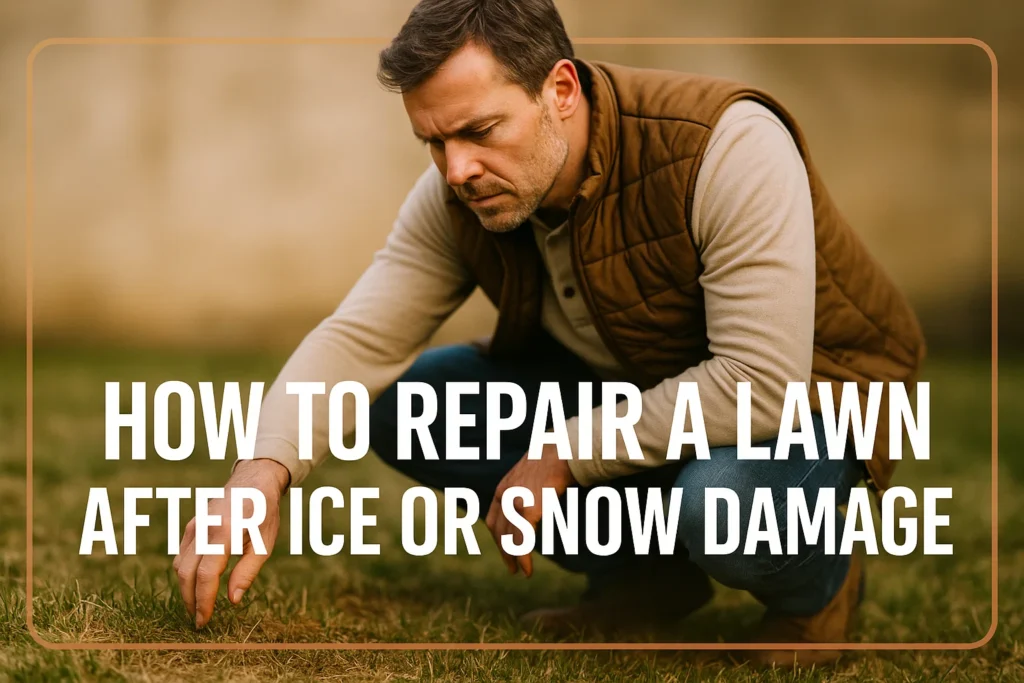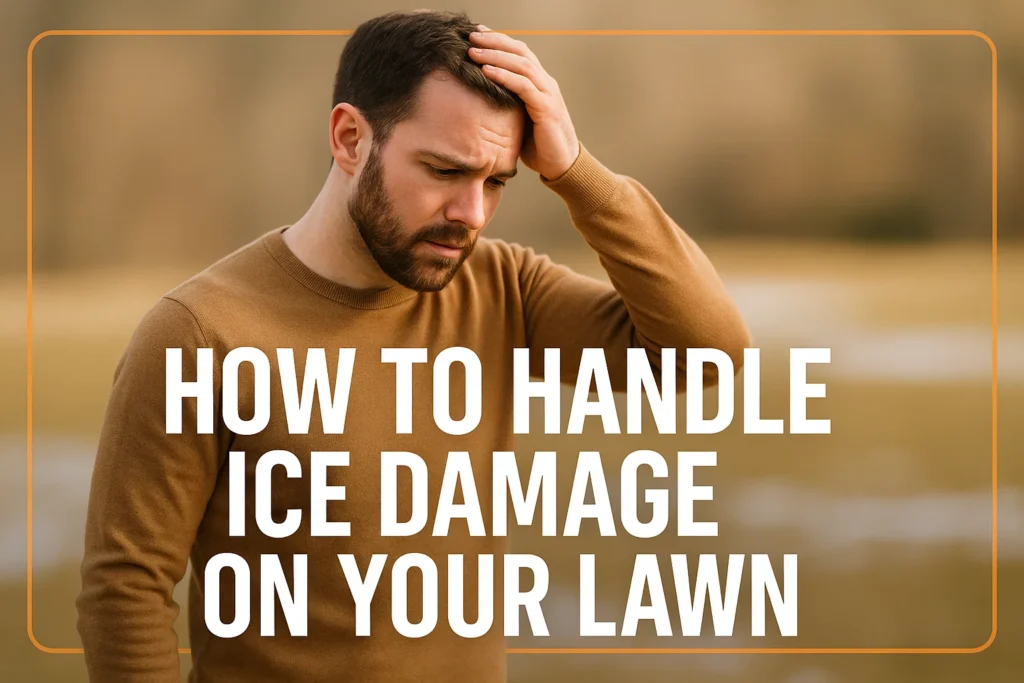When the lawn is covered with ice in winter, it can be tough. Ice damage deteriorates turf making it hard to ensure that your lawn remains healthy and green during spring. It is also good to know how to mow your lawn after it is ice-damaged so that your yard is in excellent condition throughout the year. This blog will provide simple and efficient measures to keep your lawn safe against the effects of ice, fix any damage, and ensure that it recovers in a short time.
What Happens to Grass Under Snow and Ice?
Snow provides a cover to the grass, which in most cases is insulated to reduce impact of extreme cold weather conditions. Snow is a blanket that protects the roots and soil against freezing, a factor that makes the grass survive winter. It also aids in retaining soil moisture and minimizing loss of water through grass blades.
But ice can be more destructive. Ice creates solid layer that prevents the air and sunlight from reaching the grass. This may lead to the suffocation of the grass and damage to the roots particularly where the duration of the ice is very long. The freeze- thaw cycles related to ice may destroy the soil structure and compaction, and thus, roots will hardly grow and absorb the nutrients in spring.
Moreover, the snow as well as ice particularly where there is foot traffic or an accumulation of the snow, may compress and destroy the grass blades and soil. This usually results in brown spots and poor grass after the snow and ice melt.
It is important to understand these effects so that you can control and preserve your lawn throughout the winter and spring seasons and have a healthy and strong lawn. It is possible to reduce the adverse effect that snow and ice have on your grass by practicing good lawn care before and after winter.
How to Repair a Lawn After Ice or Snow Damage

When the grass is damaged by ice or snow, it is necessary to follow these steps to avoid the problems as soon as possible. The following are tips on how to renew your lawn after it has been affected by winter:
Assess the Damage
After melting the snow and ice, check the lawn in case it is damaged in any way like brown patches, wilted grass, or compressed soil. This will aid in ascertaining whether or not repair is required and the scope of the same.
Rake Dead Grass and Debris
Rake off dead grass and leaves and any other debris. This removes the existing growth and enhances movement of air to the soil.
Aerate the Soil
In case the soil is compacted, then aerate it either with a manual aerator or mechanical aerator. Aeration alleviates pressure in the soil, which enables water, air and nutrients to penetrate the grass roots better.
Overseed Bare or Thin Areas
Seed any bare or patchy areas with grass to help them grow. Select the right seed mix based on your region and type of lawn.
Apply Potassium-Rich Fertilizer to fertilize.
Use a high-potassium fertilizer to enhance the reinforcement of the grass cells and help them recover after the stress due to ice and snow damage.
Water Appropriately
Maintain even moisture in the soil but do not over water it. New seeds are germinated by watering and deep roots are grown.
Avoid Excessive Traffic
Do not allow too much foot traffic on the lawn during the recovery phase to limit further destruction of the weak grass.
Do’s and Don’ts During Heavy Snowfall
| Do’s | Don’ts |
| Gently clear snow from walkways | Don’t pile snow mixed with dirt on grass |
| Limit foot traffic on snow-covered grass | Avoid large snow piles in one spot |
| Use lawn-safe ice melts if needed | Don’t walk on frozen grass |
| Check for snow mold after thaw | Avoid rock salt or harsh ice melts |
Is Snow Good or Bad for Grass?
Snow may be good or bad for your grass, depending on the amount of snowfall and its handling. Positively, a blanket of snow serves to cover the grass roots to keep them out of the winter cold and the severe winter winds. It also assists in maintaining soil moisture and may provide some small portion of nitrogen to the soil as it melts, which is useful in the spring grass growth.
Nevertheless, excessive snow or snow that remains on the lawn too long may be problematic. The weight of the snow may press the grass down, destroying the blades and earth. During snow melting and refreezing, the ice may damage the grass, and cause the roots to be damaged. Long snow cover can also provide a humid condition in which fungal infections such as snow mold, can form, resulting in dead or matted areas as soon as the snow melts.
Overall, snow can be advantageous in terms of protection, but it may damage grass when it builds up or forms ice. Snow removal by maintaining the lawn before and after snowing assists in ensuring that the benefits of snow exceed the dangers.
Conclusion
Ice and snow may be harsh on your lawn, but with proper attention, your grass can recover and remain healthy. Mowing your lawn before winter, keeping it safe when there is a lot of snow, and fixing the damage after that are the main steps to make your yard green and healthy all the year round. These are just some of the tips to follow to make sure that your lawn looks best by spring.
In case you need professional assistance to take care of your lawn in all seasons, call Revamping Lawn. Our group offers expert lawn care services to guarantee the safety and recovery of your grass of the finest quality. We can make your lawn beautiful and healthy each year.
FAQ’s
Several weeks after the snow and ice melted. Conditions are dependent on weather and care and growth begins when the soil reaches temperatures about 50-56°F.
Yes, apply potassium fertilizer when the lawn starts growing actively in the spring.
Apply calcium magnesium acetate or potassium chloride ice melts to lawns. Avoid rock salt.
Spray water 1-2 times per week, as it rains, to keep the soil damp but not heavy.
Once the ground thaws, typically in the middle to late spring when soil is warm enough to grow the seeds.



